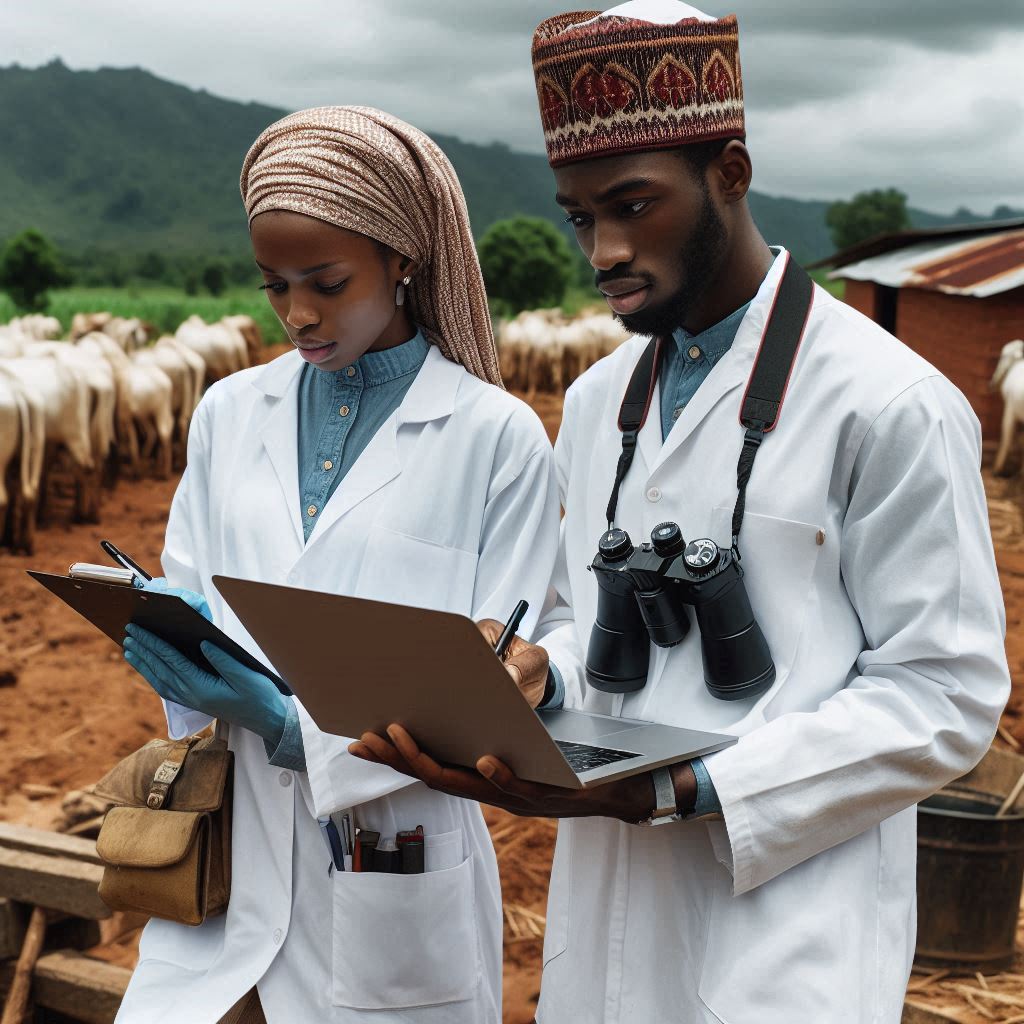Introduction
Language learning in Nigeria is evolving rapidly.
Technological tools play a crucial role in this transformation.
Traditional methods alone no longer suffice.
Innovative tools are enhancing how languages are taught and learned.
These technologies make language learning more accessible and engaging.
Digital platforms offer interactive lessons, making the process enjoyable.
Mobile apps provide flexibility, allowing learners to study anywhere.
Online courses connect students with native speakers, improving fluency.
Virtual classrooms enable real-time interaction with teachers.
Audio-visual aids help in better comprehension of complex concepts.
These tools cater to diverse learning styles, ensuring no student is left behind.
In Nigeria, where multiple languages are spoken, technology bridges educational gaps.
It supports both local and foreign language acquisition.
Embracing these tools is essential for modern language education.
Overall, technological advancements are revolutionizing language learning in Nigeria, making it more effective and inclusive.
Current State of Language Learning in Nigeria
Challenges Faced in Traditional Language Learning Methods
Language learning in Nigeria faces significant challenges, particularly with traditional methods.
Many schools still rely on outdated textbooks and rote memorization. These methods fail to engage students effectively.
Teachers often struggle with large class sizes, making individualized attention impossible.
Additionally, many educators lack proper training in modern language teaching techniques.
This hampers their ability to deliver effective lessons.
Consequently, students frequently find language learning tedious and uninspiring.
Another challenge is the insufficient number of qualified language teachers.
Many educators lack proficiency in the languages they teach.
This results in poor quality instruction and low student proficiency levels.
Moreover, continuous professional development opportunities for teachers are limited.
This prevents them from adopting new teaching methodologies.
Consequently, many students leave school with inadequate language skills.
The digital divide also plays a crucial role in exacerbating these challenges.
Access to the internet and digital devices is unevenly distributed across Nigeria.
Urban areas generally have better connectivity and access to technology.
In contrast, rural areas lag significantly behind. This disparity creates unequal learning opportunities.
Students in rural areas are particularly disadvantaged.
They miss out on the benefits of digital learning tools that their urban counterparts enjoy.
Lack of Access to Quality Resources and Materials
A major issue is the lack of access to quality resources and materials.
Rural areas, in particular, suffer from this deficiency. Many schools cannot afford up-to-date textbooks or teaching aids.
Libraries, where they exist, are often poorly stocked.
Students have limited exposure to diverse learning materials. This scarcity of resources severely restricts their learning potential.
Furthermore, there is a significant gap in the availability of multimedia resources.
Audio-visual aids, which can enhance understanding, are rarely used in classrooms.
Parental involvement in language learning is another critical factor. Many parents are unable to support their children’s language education.
This is often due to their own limited proficiency in the language of instruction.
Consequently, children receive little reinforcement of their learning at home.
This lack of support further impedes their progress. The language of instruction often poses a barrier.
Many students learn in a language that is not their mother tongue.
This creates additional difficulties in understanding and absorbing new concepts.
It also leads to lower engagement and interest in learning. Traditional teaching methods do not adequately address these multilingual challenges.
Overall, the current state of language learning in Nigeria is fraught with challenges.
Traditional methods and lack of access to quality resources significantly hinder progress.
Addressing these issues requires a comprehensive approach. Integrating technological tools could provide much-needed solutions.
However, this requires concerted efforts from all stakeholders.
Governments, educators, and communities must work together.
By doing so, they can create a more effective and inclusive language learning environment in Nigeria.
Read: Student Experiences: Life in Communication Arts
Role of Technological Tools in Language Learning
Technology has revolutionized the way we learn languages in Nigeria, making it more accessible, interactive, and efficient.
Let’s explore the advantages of using technological tools in language learning and how they can enhance language acquisition and proficiency.
Advantages of using technological tools in language learning
- Accessibility: With the rise of smartphones and the internet, language learning apps and platforms are readily available to users. This accessibility enables learners in Nigeria to practice anytime, anywhere.
- Interactive Learning: Technological tools such as language learning apps offer interactive exercises, quizzes, and games that engage users and make learning fun and engaging. This interactive approach helps learners stay motivated and focused on their language learning journey.
- Personalized Learning: Many language learning apps use algorithms to tailor lessons to individual learners’ needs and preferences. This personalized approach allows users to progress at their own pace and focus on areas where they need improvement.
- Multimedia Support: Technological tools often include audio and video features that help users improve their listening and speaking skills. This multimedia support enhances the learning experience and makes it more engaging and effective.
- Feedback and Progress Tracking: Language learning apps provide instant feedback on exercises and track users’ progress over time. This feature allows learners to monitor their performance, set goals, and stay motivated to continue learning.
How technology can enhance language acquisition and proficiency
- Immersion: Virtual reality technology can create simulated environments where learners can immerse themselves in the language they are learning. This immersive experience helps learners develop their language skills more effectively and quickly.
- Real-life Context: Language learning apps often include scenarios and dialogues that reflect real-life situations. By practicing conversations in context, learners can improve their understanding of the language and develop practical language skills.
- Instant Access to Resources: With technological tools, learners in Nigeria can access a wealth of resources such as online dictionaries, grammar guides, and language forums. This instant access to information helps learners deepen their understanding of the language and overcome language barriers.
- Collaboration and Communication: Technological tools facilitate collaboration and communication among learners, allowing them to connect with other language enthusiasts and native speakers. This interaction provides opportunities for practice, feedback, and cultural exchange, further enhancing language acquisition and proficiency.
- Gamification: Many language learning apps use gamification techniques to motivate users and make learning more enjoyable. By earning points, completing challenges, and unlocking achievements, learners feel a sense of accomplishment and are encouraged to continue practicing and improving their language skills.
Read: Communication Arts: Balancing Theory and Practice
Popular Technological Tools for Language Learning
Overview of various tools available for language learning in Nigeria
Language learning in Nigeria has seen a significant transformation with the advent of technological tools.
These tools offer innovative ways to overcome traditional language learning challenges.
Here, we explore various popular tools available in Nigeria and their benefits.
Duolingo
Duolingo is one of the most popular language learning apps globally, and Nigeria is no exception.
It offers a user-friendly interface and gamified lessons.
Users can learn multiple languages through short, engaging lessons.
Duolingo tracks progress and adapts to the learner’s level, ensuring a personalized experience.
Its interactive approach makes learning fun and effective.
Babbel
Babbel provides structured language courses designed by linguistic experts.
It focuses on practical language skills needed for real-life conversations.
Babbel’s courses cover various topics, including travel, business, and daily interactions.
Users benefit from its speech recognition technology, which helps improve pronunciation.
Babbel also offers offline access, making it convenient for users with limited internet connectivity.
Memrise
Memrise combines language learning with cultural immersion.
It uses spaced repetition and mnemonic techniques to enhance vocabulary retention.
Memrise features videos of native speakers, giving learners a sense of authentic language usage.
This tool also includes community-created courses, allowing users to learn niche languages and dialects.
Memrise’s approach makes it an excellent choice for immersive and engaging language learning.
Rosetta Stone
Rosetta Stone is renowned for its immersive learning method.
It teaches languages through context rather than translation, promoting intuitive understanding.
The app includes interactive activities and pronunciation feedback.
Rosetta Stone’s speech recognition technology helps learners achieve accurate pronunciation.
It also offers live tutoring sessions, providing personalized guidance from language experts.
Busuu
Busuu combines self-paced language courses with community-based learning.
Users can practice their language skills with native speakers through conversations and feedback.
Busuu’s courses cover reading, writing, speaking, and listening skills.
The platform also offers personalized study plans and regular assessments.
Busuu’s community aspect enhances learning by allowing real-time interaction with language learners worldwide.
Google Translate
Google Translate is an essential tool for quick translations and language practice.
It supports numerous languages and offers text, voice, and image translation.
Google Translate’s conversation mode enables real-time bilingual communication.
While not a comprehensive learning tool, it assists in understanding and practicing new languages.
Its accessibility and ease of use make it invaluable for language learners.
HelloTalk
HelloTalk connects language learners with native speakers for language exchange.
Users can chat, voice call, and even send audio messages to practice their target language.
HelloTalk includes translation and correction features, aiding in effective communication.
The platform’s community fosters a supportive environment for language practice.
HelloTalk’s interactive nature promotes practical language use and cultural exchange.
Benefits of Technological Tools
These technological tools offer numerous benefits for language learners in Nigeria.
They provide flexible learning schedules, allowing users to learn at their own pace.
The interactive and gamified elements make learning engaging and enjoyable.
Speech recognition and feedback enhance pronunciation and speaking skills.
These tools also offer a vast range of languages, catering to diverse learning needs.
By connecting learners with native speakers, they promote cultural exchange and practical language use.
Read: Introduction to African and Asian Studies in Nigeria

Best Practices for Using Technological Tools in Language Learning
Strategies for Maximizing Technological Tools
Blended Learning Approach
Combine technological tools with traditional methods. Use apps for practice and classroom sessions for deeper understanding. This approach leverages the strengths of both methods.
Integrate Technology into Daily Routine
Integrate language learning into your daily routine. Use language apps during commutes or breaks. Consistent practice enhances proficiency.
Use Technology for Real-Life Practice
Apply language skills in real-life scenarios. Use translation apps while shopping or traveling. Real-life practice reinforces learning.
Encourage Collaborative Learning
Promote collaborative learning with peers. Use platforms like Google Classroom for group activities. Collaboration enhances learning through shared experiences.
Customize Learning Experience
Personalize your learning experience. Adjust app settings to suit your preferences. Customization makes learning more enjoyable and effective.
Tips for Integrating Technology into Curriculum
Train Educators on Technology Use
Provide training for educators on using technological tools. Well-trained educators effectively integrate technology into lessons.
Align Tools with Curriculum Goals
Ensure that technological tools align with curriculum objectives. Choose tools that complement and enhance classroom teaching.
Encourage Student Feedback
Regularly collect student feedback on technological tools. Adjust tool usage based on their experiences and preferences.
Foster a Supportive Environment
Create a supportive environment for using technology. Encourage experimentation and provide assistance. A positive environment boosts confidence and engagement.
Continuously Update Resources
Keep technological tools and resources updated. Regular updates ensure access to the latest features and improvements.
Essentially, using technological tools in language learning requires strategic planning and implementation. By following these best practices, you can enhance language proficiency and cultural understanding effectively.
Read: Digital Media Trends in Communication Arts
Success Stories of Language Learners Using Technological Tools
Technology has revolutionized the way we learn languages, making it more accessible and efficient.
Let’s dive into some inspiring case studies of individuals who have benefited from using technology in their language learning journey.
Case Study 1: Jane’s Journey to Fluency
- Jane, a Nigerian student, struggled with French in school.
- She started using language learning apps like Duolingo and Babbel.
- With daily practice and interactive lessons, Jane saw significant improvement.
- Her vocabulary expanded, and she gained confidence in speaking French.
- Thanks to technology, Jane achieved fluency in French and excelled in her exams.
Case Study 2: John’s Adventure in Learning Mandarin
- John, a businessman, wanted to learn Mandarin for his work in Nigeria.
- He enrolled in online courses and used language exchange platforms.
- Through video calls with native speakers, John improved his pronunciation.
- He also utilized flashcard apps to memorize Chinese characters effectively.
- John’s language skills soared, opening up new opportunities in his career.
Impact of Technology on Language Proficiency
- Both Jane and John’s stories highlight the positive impact of technology on language proficiency.
- Interactive lessons and gamified apps make learning engaging and fun.
- Access to online resources allows learners to practice anytime, anywhere.
- Virtual classrooms and language exchange platforms connect learners globally.
- Personalized feedback from AI tutors helps improve speaking and writing skills.
Generally, the success stories of Jane and John demonstrate how technological tools enhance language learning. With dedication and the right resources, anyone can achieve fluency in a foreign language.
Embrace technology and embark on your own language learning journey today!
Conclusion
In closing, technological tools have revolutionized language learning in Nigeria by offering interactive and immersive experiences.
Students can now access language learning apps, online courses, and virtual classrooms that cater to different learning styles.
These tools provide flexibility, convenience, and personalized learning experiences, ultimately enhancing language acquisition and proficiency.
Furthermore, the use of technology in language learning promotes self-directed learning and independent practice, leading to better retention of language skills.
As such, it is imperative for educators and students in Nigeria to embrace these technological tools for language learning to stay competitive in a globalized world.
By incorporating these tools into the curriculum, schools can create engaging and dynamic learning environments that cater to the diverse needs of students.
Therefore, it is essential for policymakers, educators, and parents to collaborate in integrating these tools into the educational system to enhance language learning outcomes.
Ultimately, embracing technological tools in language learning in Nigeria will not only improve language proficiency but also equip students with the necessary skills to succeed in the 21st-century digital economy.
[E-Books for Sale]
The Nigerian Professional's Playbook: Strategies to Accelerate Your Career and Build Lasting Wealth
₦2,000 • 10 Chapters • 33 pages
Fed Up with Stagnant Salaries and Career Frustration? Grab the Proven Nigerian Playbook for Just ₦2,000!
See All 10 Chapters of this E-Book
500 Cutting-Edge Tech Startup Ideas for 2024 & 2025: Innovate, Create, Dominate
₦3,000 • 500 Tech Startup Ideas • 62 pages
You will get inspired with 500 innovative tech startup ideas for 2024 and 2025, complete with concise descriptions to help you kickstart your entrepreneurial journey in AI, Blockchain, IoT, Fintech, and AR/VR.
See All 500 Tech Startup Ideas of this E-Book
Mastering Project Management: A Comprehensive Guide to GanttPRO and Microsoft Project
₦3,150 • 10 Chapters • 102 pages
Explore 'Mastering Project Management,' an e-book guide on using GanttPRO and MS Project for optimal project success.
See All 10 Chapters of this E-Book
Migration Mastery: From Nigeria to Abroad
₦2,450 • 30 Chapters • 244 pages
Unlock success in your migration from Nigeria with our e-book. Comprehensive guide for a smooth transition abroad.
See All 30 Chapters of this E-Book
The Future of Work in Nigeria: Trends, Professions, and Possibilities
₦3,500 • 24 Chapters • 188 pages
Navigate Nigeria's evolving job landscape with our e-book on the future of work. Gain key insights into tech innovations and cultural shifts. Stay ahead; purchase today.
See All 24 Chapters of this E-Book
50 Simple Tips to Stay Ahead of Your Peers
₦1,750 • 5 Chapters • 25 pages
Master success with '50 Simple Tips to Stay Ahead of Your Peers'. Unlock strategies to outshine and excel in every aspect of life.








